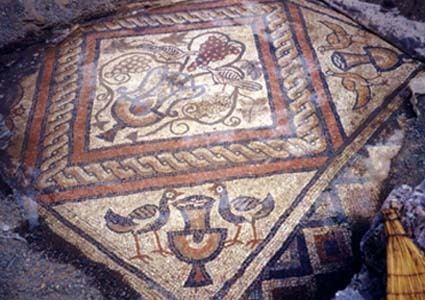Type Mixed UNESCO World Heritage Site inscription 9 May 2011 | Criteria (iii)(iv)(vii)(ix) | |
 | ||
Location Pogradec region of Albania: Lin, Selca, Pogradec, Drilon, Tushemisht, shores of Lake Ohrid UNESCO region Europe and North America | ||
The Natural and Cultural Heritage of the Ohrid Region is a possible UNESCO site situated in Pogradec, Albania, around the section of Lake Ohrid located in Albania. The site was submitted as a possible UNESCO site by the Permanent Delegation of Albania to UNESCO on 5 September 2011, and has been placed on the tentative list. It has come under criteria II, IV, VII and IX.
History
Pogradec and the surrounding area on the shores of Lake Ohrid was first settled by Illyrians in the 5th century BC. Archaeological findings show an Illyrian settlement on a hill located north-west of Pogradec, called Lynkesta, which was fortified in the 4th century BC. The specific tribe of the Illyrians living in the area is not certain, thought to be either the Enchele/Enkelej. By the 3rd Century BC, Roman forces had taken control of Pogradec. The road Via Egnatia is found in the Pogradec region, near to the shores of Lake Ohrid, and is evidence of the former Roman presence.
As time passed, the inhabitants of Pogradec became known as the Arbër rather than Illyrians, and were eventually referred to as Albanians. The fortification of the city remained intact for a long time, and were only overcome 1400 years after their construction by the Illyrians, by the Slavs. During the Slavic invasion between the 7th and 8th centuries AD, Slavs occupied much of the Balkans, including the Pogradec area. Afterwards the Byzantines were able slowly to regain the imperial control. The Bulgarians then entered Albania, capturing the Pogradec area in the 9th century and sustained the occupation until the 12th century. During these periods of occupation, life behind the fortified walls on the hill was abandoned, and instead a new settlement was created closer to Lake Ohrid, which is modern day Pogradec. The name of the city comes from Slavic languages which once had occupied the area - the name Podga Grada, which evolved to the modern day name, means under the city. This is a reference to the former Illyrian site on the hill above Pogradec.
Over time, the city changed hands many times. These occupations have all left a mark on the area, and shows its history. The historic centre of Pogradec shows 19th- and 20th-century Albanian architecture. Floor mosaics and the church Lin show the historic presence of Christianity in the area, dating back to the time of the Byzantine Empire.
